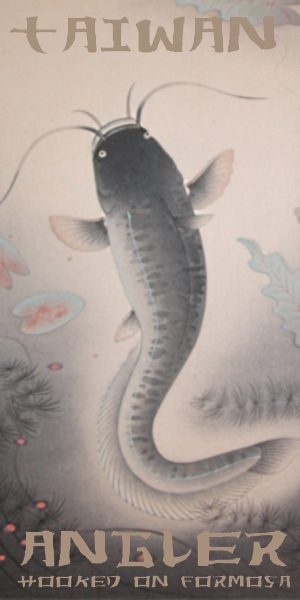 Chris Jackson |
Chris Jackson |  2 Comments | | tagged
2 Comments | | tagged  Keelung,
Keelung,  charter,
charter,  cutlass fish,
cutlass fish,  hairtail,
hairtail,  inshore,
inshore,  jigging in
jigging in  Video
Video

 Chris Jackson |
Chris Jackson |  2 Comments |
2 Comments |  Share Article | tagged
Share Article | tagged  Keelung,
Keelung,  charter,
charter,  cutlass fish,
cutlass fish,  hairtail,
hairtail,  inshore,
inshore,  jigging in
jigging in  Video
Video  Monday, January 3, 2011 at 9:55PM
Monday, January 3, 2011 at 9:55PM Family: Trichiuridae
Scientific names: Trichiurus lepturus
Common names: Largehead hairtail, cutlass fish, ribbon fish, common hairtail, frost fish, belt fish
Habitat: Coastal waters, inshore and bays.
Size range: Can grow to over two meters with one meter or less being more common.
Angling tactics: Will take live bait, jigs, spoons and other artificial lures. Most commonly caught at night. Commercial and sport fishing boats will often employ large side lights to attract bait fish and entice hairtails closer to the surface.
The largehead hairtail is one of the more unusual and popular saltwater sport fishing target species in Taiwan. It is a member of a large family of fish found across the globe known as cutlass fish, so named for their smooth metallic skin and long blade-like shape. Lacking caudal or pelvic fins, Hairtails propel themselves through the water by undulating their long single dorsal fin, which stretches the length of their bodies. Their overall shape and long sharp teeth give them a fearsome eel-like appearance, though they are not related to true eels.
Hairtails are most active in the colder months when most pelagic species have moved offshore and away for Taiwan waters. This makes them a popular winter quarry for anglers, many of whom crowd charter boats for cold weather fishing action. Hairtails seem to constitute one of the more consistent sport fisheries on the island with boats returning to harbor with large catches and happy anglers when the schools can be located.
Hairtail fishing is concentrated on the north, east and south sides of the island from Dansui to Kenting, with the Keelung area being one of the most heavily fished regions for the species.
One of the more interesting quirks of the hairtail is its method of feeding and daily migration from deep to shallow water. During the day, the fish remain in deeper water near the sea floor. After dusk, schools move closer to the surface where they suspend vertically with their head pointed toward the surface. There they lay in wait for passing schools of small fish, squid or crustaceans. When feeding, hairtails lunge upward, ambushing their prey from below.
 Hairtail fishing doesn’t generally require any specialized gear. Bait casting rods or spinning rigs work equally well. The fish are not particularly picky about bait, either, though live bait tends to work best. Many anglers like to rig multiple hooks on dropper loops when bait fishing. Luminescent light sticks can be used to attract fish to the bait. Artificial lures, such as jigs and flashy spoons, are also productive.
Hairtail fishing doesn’t generally require any specialized gear. Bait casting rods or spinning rigs work equally well. The fish are not particularly picky about bait, either, though live bait tends to work best. Many anglers like to rig multiple hooks on dropper loops when bait fishing. Luminescent light sticks can be used to attract fish to the bait. Artificial lures, such as jigs and flashy spoons, are also productive.
The strike can range from a solid hit, to a soft pull as the fish moves away with the bait. Other times, your line may go suddenly slack as the fish move toward the surface after taking the bait. Once hooked, the fights can vary from a deep run, to a circular tussle.
Hairtail are prized in Taiwan, Japan, Korea and China for eating. It is served as sashimi in Japan, though grilling or baking seems to be the most popular method of preparing the fish. Bones are relatively easy to remove from the filets.
 Chris Jackson |
Chris Jackson |  Post a Comment |
Post a Comment |  2 References |
2 References |  Share Article | tagged
Share Article | tagged  cutlass fish,
cutlass fish,  hairtail,
hairtail,  largehead hairtail in
largehead hairtail in  Saltwater Targets
Saltwater Targets